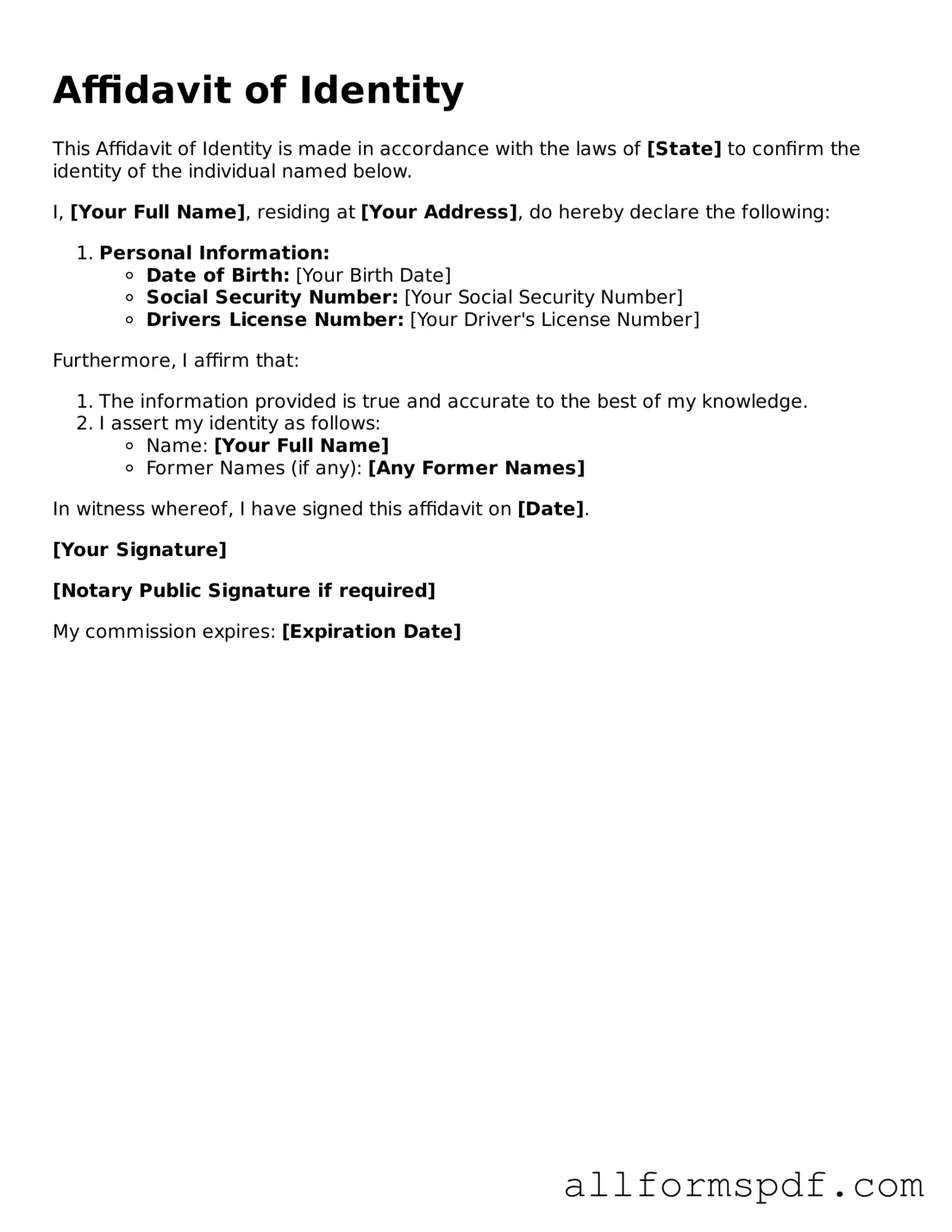Filling out an Affidavit of Identity form can seem straightforward, but many people make common mistakes that can lead to delays or even rejections. One frequent error is failing to provide complete information. When sections are left blank, it creates uncertainty about your identity, which can hinder the process. Always ensure that every required field is filled out accurately.
Another common mistake is using incorrect or outdated personal information. Whether it’s a misspelled name or an old address, inaccuracies can complicate your application. Double-check your details against official documents to ensure everything matches perfectly.
Many individuals overlook the importance of signatures. Some forget to sign the affidavit altogether, while others may sign in the wrong place. It’s crucial to follow the instructions carefully and sign where indicated. A missing or improperly placed signature can render the document invalid.
Not providing proper identification is another pitfall. The affidavit often requires supporting documents to verify your identity. Failing to include these can lead to significant delays. Always attach the necessary identification, such as a driver’s license or passport, as specified in the instructions.
Inconsistent information across documents can raise red flags. If your affidavit states one address but your ID shows another, it can create confusion. Make sure that all your documents align to present a clear and consistent picture of your identity.
People also sometimes forget to date the affidavit. This may seem minor, but an undated document can lead to questions about its validity. Always include the date when you fill out the form to avoid any potential issues.
Another mistake is not notarizing the affidavit when required. Some forms need to be notarized to be considered valid. Skipping this step can result in the form being rejected. If notarization is necessary, be sure to complete this step before submitting your affidavit.
Submitting the affidavit without reviewing it is a common error. Rushing through the process can lead to overlooked mistakes. Take a moment to read through your completed form to catch any potential errors before submission.
Some people fail to keep a copy of their affidavit. It’s always wise to retain a copy for your records. This way, if any issues arise, you have a reference to consult. Keeping a copy can save you time and stress in the long run.
Finally, misunderstanding the purpose of the affidavit can lead to filling it out incorrectly. An affidavit serves to affirm your identity legally, so it’s important to understand its significance and the implications of the information you provide. Taking the time to understand the form can make a significant difference in the outcome.
